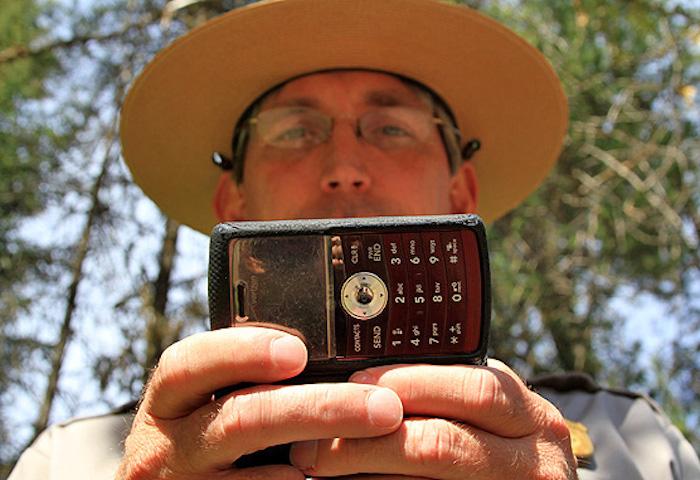
While there might be high demand for Internet connectivity in the National Park System, many parks don't yet provide it, and experts say it could be challenging to provide it/NPS, David Restivo
A small handful of days before the National Park Service announced that its maintenance backlog had crept up to nearly $12 billion, five congressmen called for more funding for Internet connectivity in the National Park System. But here's the rub: Can the National Park Service easily provide that service if told to provide it? The experts don't think so.
Wiring places like Grand Canyon National Park, Glacier National Park, and Yellowstone National Park does not happen as quickly or inexpensively as calling your local Internet Service Provider in, say, Chicago or New York or Kansas City and asking to have the service turned out. Many national parks are relatively remote from major fiber optics systems and phone service that can handle the additional load. Another issue is the harsh weather some parks endure in the winter and, in the case of Death Valley National Park, the summer.
Peter Jarich, vice president and wireless network infrastructure analyst at research firm Current Analysis, says all those issues can make it challenging for the Park Service to wire the park system. And then there's also the need to make the Wi-Fi infrastructure unobtrusive.
“You don’t want to detract from the reason why people are coming to the park in terms of beauty, so there’s going to have to be some level of disguising,” he told FedTech Magazine.
The question of whether to provide greater connectivity in the National Park System can generate stalwart proponents...and opponents. Back in 2009 officials in Yellowstone adopted a Wi-Fi and cellphone plan, something that led Public Employees for Environmental Responsibility to dub the efforts "a disturbing stealth scheme to wire our national park system."
PEER launched a petition drive with hopes of landing 15,000 signatures on a letter asking Interior Secretary Sally Jewell to halt Wi-Fi plans in the park system, saying that "(V)isitors come to national parks in search of serenity and unspoiled vistas, but the proliferation of cell phone towers throughout our park system makes it increasingly difficult to escape the electronic tendrils of society and commune with nature while someone next to you is jabbering on a cell phone, receiving texts, or watching videos."
However, just 2,045 people signed the petition, far below the 15,000-signature goal.



Comments
EC, the point was (and is) available WiFi in remote parts of our National Parks changes everything. Distracts from the much needed restorative wildland experiences. Talk with Rafting Guides, Backcountry Rangers or the great number of folks that enjoy the quiet and escape from technology. We have very restrictive areas for air traffic to provide a better remote experience for other user groups. Keep Wi-Fi out of the wild places so at least the kids growing up in the technology culture will know and possibly appreciate quality time away from it.
Distracts who? Who are you to define how someone else enjoys their wildland experiences. If YOU don't want to be distracted, don't use wi-fi enabled devices.
It is distracting to see people attached to their devices in a place where most people go to get away from that kind of bleeping technology. This proves that congress is out of touch with the people. Folks don't want wifi in nature. Congress critters would like to stay connected so they can post selfies "in nature".
Sorry EC, you have lost me. You can't be accepting of the idea of being on a raft trip down the Colorado through the Grand Canyon with a group and there are folks that feel the need to be online or yack away on their cell phones. I know Boatman that avoid camping at places on the River where there is a signal because how it changes the experience for everyone. I've guided a good bit and to be a part of others, often transformational, experiences was/is always gratifying. Not about me for the most part.
Beside the fact that it is unlikely that wi-fi will be available on the river, if someone wants to chat on NPT while riding the Colorado, I have no problem at all. And are we going to prohibit talking on the Colorado? I just don't understand why all of you want to force your priorities on everyone else. Its just more of the "we know what is best for you" mentality.
Your basis for that statement?
Having the ability to use wi-fi for educational and interpretative purposes alone would make the installation expense worth it. I agree that electronics should be left at home, but there is no stopping progress.
Unfortunately, it also seems there is no stopping destruction either.